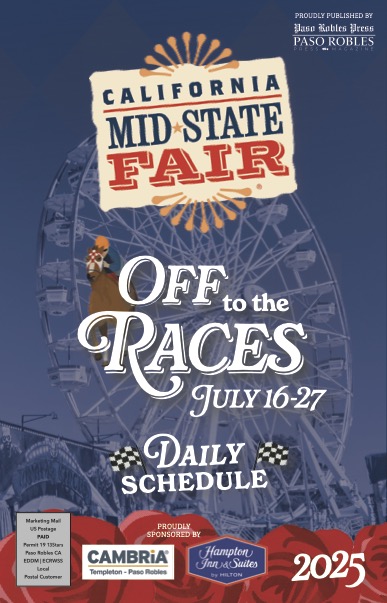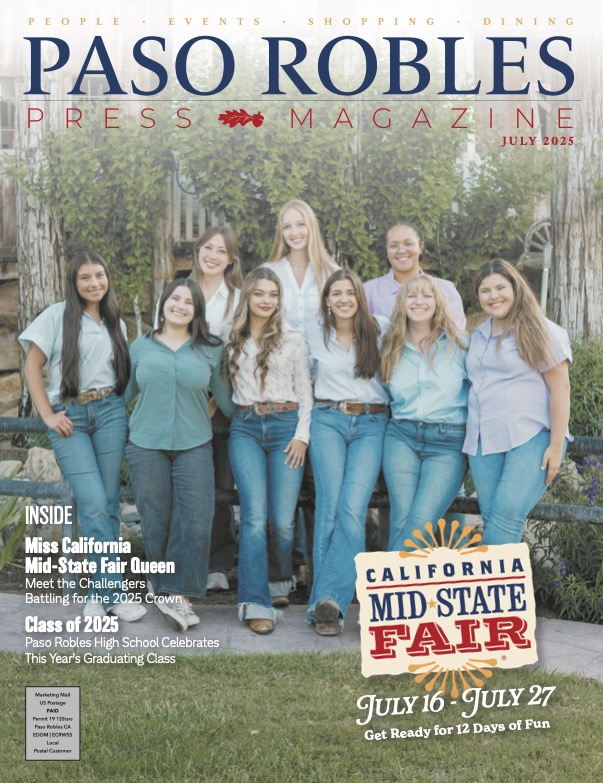The 8th Annual Garagiste Festival kicked off the weekend of November 9 and 10 in Paso Robles and Templeton. The festival has gathered such momentum over the years that this is already the 21st festival in its eight-year history. Founded in Paso Robles by winemakers Doug Minnick and Stewart McLennan, the festival has become the undisputed center of the small-lot wine movement having expanded the concept into Santa Ynez Valley, Los Angeles and this year Sonoma.
 While most wine festivals are either varietal or geographically focused, this one focuses entirely on small wineries and is targeted not to distributors but rather consumers who like under-the-radar wines.
While most wine festivals are either varietal or geographically focused, this one focuses entirely on small wineries and is targeted not to distributors but rather consumers who like under-the-radar wines.
This is one festival where die-hard fans can taste up to 200 different wines from more than 30 grapes varieties offered by over 60 California micro-wineries, some producing as little as 150 cases annually.
In the true spirit of garagiste winemakers, Minnick and McLennan devote their passion to small production. McLennan crafts a minuscule 200-300 annual-case production in Paso Robles. His focus with Golden Triangle is on 100-percent whole cluster fermentations of varietal Syrah and Cabernet and Rhône variety blends.

Karen Warfield of Cutruzzola Vineyards and Cypher Winery’s Susan A. Mahler (aka SAM)
Minnick, who is based in Studio City, sources fruit from Paso Robles, Santa Barbara County and Sonoma for a 900 annual-case production of his Hoi Polloi label, which can be savored at his tasting room in Old Town Newhall just north of Los Angeles.
I’ve been attending this festival for several years and its outreach and maverick spirit never ceases to surprise me. This year at the Friday night Rare & Reserve tasting held at Templeton’s American Legion Hall, with some 30 participants, I discovered several newcomers, among them Jason DiFrancesco of Leverage Wines, where I savored Trajectory, a complex blend of grenache, syrah and mourvedre.
DiFrancesco’s day job in the software industry takes him between Phoenix and Orange County. He stops by Paso once a month to oversee production of his wines made from fruit sourced in Paso and crafted by winemaker Aaron Jackson in Tin City. The wines are available for tasting at Templeton’s 15 Degrees C wine shop & bar. You can’t get more “garagiste” than that.
DiFrancesco also has a mission. He supports brain cancer research through his limited 650-case annual production of hand crafted Rhône style wines. He is “Leveraging” his brand’s existence to show how wine can enhance charitable efforts and bring people together.

Dusty Nabor of his eponymous wine company with Karin Langer
Another newcomer to the fest was Corner Cellars whose very first 2017 vintage is still not ready for bottling. Co-founder and winemaker Gabriel Smith makes a mere 150 cases at Calacreous winery and offered 2 wines – tempranillo and zinfandel. Smith is on an ambitious program of creating a co-operative where he can offer administrative and business support to newbie winemakers. “The goal is to be a facilitator,” said Smith.
“We are super garagiste,” remarked Paul Quinn of his 150-case production of TW Fermentation Co., whose outstanding 2014 malbec I tasted. Quinn continues his day job as head distiller at Opolo Vineyards (his father Rick Quinn founded the winery) while crafting his own label with partner James Schreiner. The team’s fruit, naturally, is sourced from the Opolo estate.
Former musicians and brothers David and Billy Vondrasek actually started winemaking in a garage in 2001. By 2012, they went commercial, currently producing around 600 cases of their label Artisan Uprising each vintage, all made in Paso Robles with a tasting room in Lompoc.
Saturday activities staged at the Paso Robles Fairgrounds began with the morning seminar. Moderated by McLennan, the seminar entitled “The Rise of Spanish Varieties: Classic Grapes find a home in California” featured panelists Luisa Sawyer Lindquist, owner/winemaker of Verdad Wine in Santa Maria Valley; Enrique Torres, owner/winemaker of Diablo Paso; and Jeremy Leffert, winemaker of Croma Vera winery, the last two located in Paso Robles. The winemakers discussed vinification and harvest preferences as they showcased their alabariño, tempranillo and graciano wines.

Kellymarie and Nicholas Otto of The Chocolate Stache
The seminar was followed by the Grand Tasting where 60 plus wineries, mostly from Central Coast with a few from Napa, Sonoma and Mendocino, poured iconoclastic blends. While the list was heavy on cabernet sauvignon, zinfandel, syrah and GSM blends, there were some not-so-common varietal wines such as tannat, carignane, teroldego, verdelho, touriga, muscat blanc and lagrein. The winery productions ranged from as little as 90 to as much as 1500 cases per vintage. The majority were in the 600 to 700-case annual production range.
There were a dozen or so first-time participants this year: among them, Aaron Robinson, winemaker of Napa Valley’s Vandella Vineyards, who introduced me to the 2014 Red Sparrow, an interesting blend of touriga, mourvedre and syrah. “It’s TSM instead of GSM,” he commented on the earthy, mushroomy, “Pinot-esque” wine fermented with native yeast.
Another unique wine I encountered, also with native yeast, was Bevela Wines’ 2012 Matela, a teroldego that showed a snappy acidity with wisps of spice and Copia Vineyards’ seamless GSM blend.
There were numerous distinctive sangiovese blends such as Pelletiere Estate’s — fused with zinfandel — and Napa Valley’s Mastro Scheidt’s — blended with cabernet sauvignon. Also from Napa, Magnavita Cellars poured 2016 Brothers Red, a fusion of lagrein and refosco, At Hubba Wines, I encountered a smoky blend of graciano, carignan and syrah and at Deno Wines, an elegant fusion of zinfandel with grenache.

On Your Left Wine Co. in Paso Robles
An impressive lineup of pinot noirs came from such producers as Sonoma’s Montagne Russe winery and Adron Wines; Santa Cruz’s Armitage Wines; Cambria’s Cuttruzzola Vineyards; and from Paso Jennifer Hoage’s Decroux Wines made from Santa Rita Hills fruit.
Amid a sea of reds, it was refreshing to taste Tin City-based Dave McGee’s delightful Monochrome wines, dedicated to whites only. I tasted a deliciously floral amphora-aged chardonnay and a fragrant neutral-oak aged chenin blanc, a wine poised to get some respectability by altering consumers’ perception of a grape once considered “jug wine fodder.” It’s events like the Garagiste festival where attendees have the rare opportunity to experience the charm of this wine.
There were plenty of Rosés made from varieties such as malbec, garnacha, cabernet sauvignon, pinot noir, sangiovese and syrah. My favorite was the strawberry-scented, pale salmon-hued Rosé of valdiguie from Avanales Ranch on Paso’s east side.
Since inception, the non-profit Garagiste Events (producer of the Garagiste Festivals) has raised a total of $140,000 (including proceeds from the recent Paso festival), supporting Cal Poly’s Wine & Viticulture Program that provides annual scholarships to deserving Cal Poly students striving to be future garagistes.












